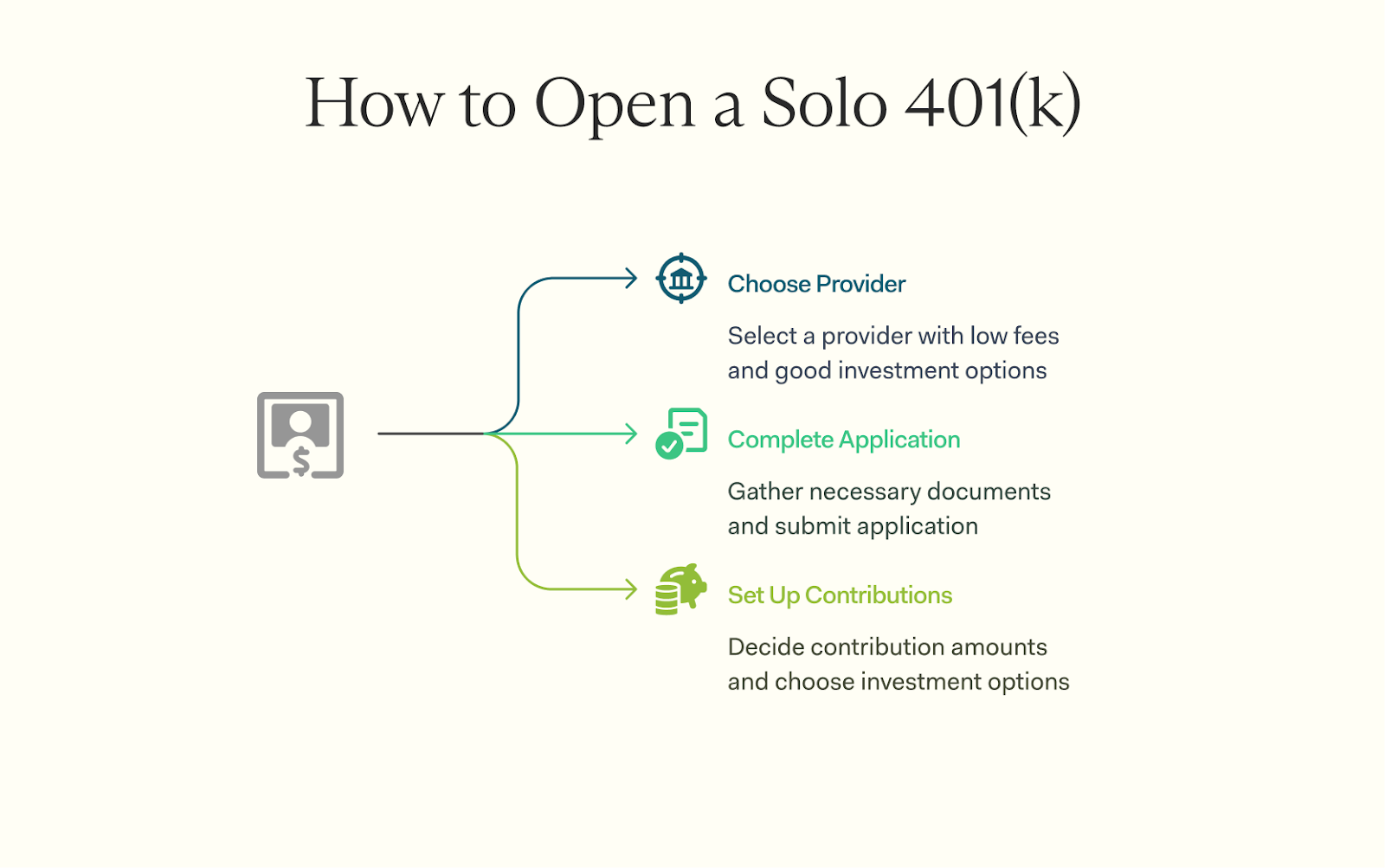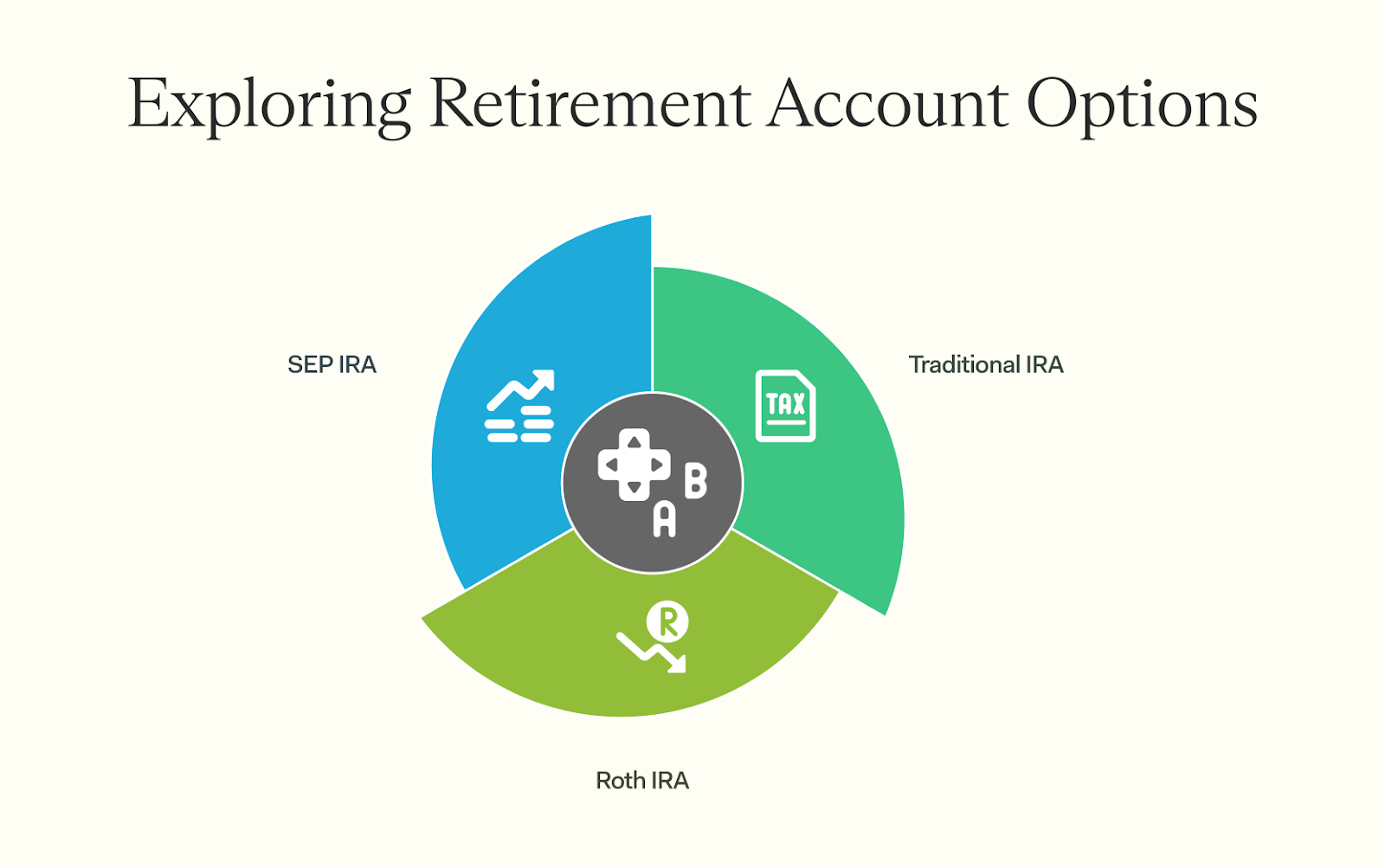Learn how to effectively build your 401k without an employer. Discover essential strategies to secure your financial future today.
Want to save for retirement but your employer doesn't offer a 401(k) plan? This is a common problem for many people. Luckily, there's a way out for those who are self-employed or don't have access to employer-sponsored retirement plans.
A Solo 401(k) can be the answer you're looking for.a
A Solo 401(k) lets you save much like traditional 401(k) plans but without needing an employer's sponsorship. It's great for small business owners, freelancers, and independent contractors.
You can enjoy tax advantages while saving for the future. We'll show you how to open one and explore other options too.
A Solo 401(k) is a retirement savings plan for those who work for themselves, acting as both the employer and the employee. It's perfect for freelancers, sole proprietors, and anyone running their own business without employees.
This retirement savings plan is designed for self-employed individuals or business owners with no employees, other than a spouse. It allows these workers to save for retirement by putting money into an account that offers tax advantages.
With a Solo 401(k), you can choose between making pre-tax contributions, which lower your taxable income now and are taxed when you withdraw them in retirement, or Roth contributions, where you pay taxes now but enjoy tax-free withdrawals later.
Solo 401(k)s offer high contribution limits and flexible contribution options, making them an attractive choice for entrepreneurs seeking to maximize their retirement savings.
Eligibility for opening a Solo 401(k) includes being self-employed or owning a business without any employees, except possibly a spouse. This makes it ideal for sole proprietors, independent contractors, and small business owners looking to save more aggressively for the future.
The IRS sets annual contribution limits that tend to be higher than those allowed in traditional employer-sponsored plans—allowing up to $70,000 in total contributions in 2025, including both employee elective deferrals and employer contributions, with an elective deferral limit of $23,500 if you're under age 50.
If you're age 50 or older, "catch-up" provisions allow additional contributions. Specifically, individuals aged 50 to 59 and those 64 and older can contribute an additional $7,500 per year, while those aged 60 to 63 can contribute $11,250 per year.
To open a Solo 401(k), you must be self-employed or own a business. This includes sole proprietors and independent contractors. Anyone with earned income can apply. You cannot have full-time employees other than yourself and your spouse.
For those whose employers don't offer a retirement plan, this is a great option to consider.
The IRS allows higher contribution limits for Solo 401(k) accounts. In 2024, self-employed individuals can contribute both as an employee and an employer up to a total of $69,000 if under age 50, which includes an employee elective deferral limit of $23,000. This makes it easier to save for retirement through tax-deferred savings vehicles like mutual funds and stocks.
Opening a Solo 401(k) is pretty simple. First, pick a provider that fits your needs. Then, fill out the application and set up how much you want to contribute.

Selecting the right Solo 401(k) provider is crucial. Look for a financial institution that fits your needs. Check if they have low fees and good investment options, like stocks or mutual funds.
Some popular providers are Fidelity and Charles Schwab.
Make sure the provider allows you to set up contributions easily. You'll want one that offers clear guidance on how to manage your account. With the right Solo 401(k), you can save for retirement without an employer's help, while enjoying tax breaks too.
To complete the application process for a Solo 401(k), gather important documents. You will need your Social Security number, business information, and any other forms required by your chosen provider.
Fill out the application with clear details about yourself and your business. Some providers may require additional documentation to verify your self-employment status. After submitting everything, wait for approval from the provider before moving on to set up contributions and investment options.
When setting up your Solo 401(k), decide how much you want to contribute. The IRS sets annual contribution limits that tend to be higher than those allowed in traditional employer-sponsored plans—allowing up to $70,000 in total contributions in 2025 if you're under age 50, and $69,000 in 2024, which includes both employee elective deferrals and employer contributions. As an employee, you can contribute up to $23,500 per year.
If you are aged 50 to 59 or 64 and older, you can add another $7,500 as a catch-up contribution, and if you are aged 60 to 63, the catch-up contribution limit is $11,250.
Next, choose your investment options. A Solo 401(k) allows investments in stocks, mutual funds, bonds, and even real estate. Make sure to pick options that match your risk level and retirement goals.
Managing these choices wisely will help grow your savings over time.
Now let's look at other retirement account alternatives like the Traditional IRA or Roth IRA.
If you're seeking alternatives to a 401(k), other retirement accounts, such as an individual retirement account (IRA), can be good options for saving. These accounts offer tax benefits and flexibility that might suit your needs.

A Traditional IRA is a type of individual retirement account. It helps you save money for retirement while getting tax benefits. There are no age limits for contributions, so long as you have earned income.
Your contributions may be tax-deductible, which means you lower your taxable income for the year.
With a Traditional IRA, your earnings grow tax-deferred. This means you do not pay taxes on the money until you withdraw it later, usually after age 59½. For 2025, the contribution limit is $7,000 or $8,000 if you're over age 50.
A Roth IRA is a type of individual retirement account. It lets you save money for retirement with tax-free withdrawals. You fund a Roth IRA using after-tax dollars, so you pay taxes on the money before putting it in the account.
Your investments grow tax-free, and you won't owe taxes when you take out funds during retirement.
You can open one if your income meets certain limits. This option works well for people whose employer does not offer a 401(k) plan or those who are self-employed. Unlike other accounts, there's no required minimum distribution while you're alive. If you are 50 or older, you can contribute an additional $1,000 annually, making it easier to save more as you approach retirement.
You can keep your money growing as long as you want. Next up, we'll discuss SEP IRAs!
A SEP IRA, or Simplified Employee Pension Individual Retirement Account, is an excellent option for self-employed individuals. It allows you to save money for retirement. You can set up this account easily and start contributing right away.
Contribution limits are high compared to other accounts. You can add up to 25% of your income or $70,000 in 2025, whichever is lower. This makes it a strong choice if you're looking to enhance your retirement savings quickly.
It offers tax-deferred growth too, meaning you won't pay taxes until you withdraw the money later on. If you're self-employed or run a small business, consider opening a SEP IRA as part of your overall retirement strategy.
Keep an eye on your account often to see how it grows. Balance your contributions with other money goals, too. This way, you can stay on track for a secure future.
Check on your Solo 401(k) often. Look at how much you've contributed and what you're earning. Watch for changes in fees, too. This helps ensure that your retirement savings grow as planned.
Stay informed about your investments. Know if they still align with your goals. Review the performance of mutual funds, stocks, or bonds you hold. If something isn't working well, consider adjusting it to meet your financial needs better—this keeps your retirement plan strong and ready for the future.
Balancing contributions with other financial goals is smart. Saving for retirement is important, but it shouldn't stop you from reaching other goals. You might want to pay off debt or save for a home too.
Think about how much you can put into your Solo 401(k) while still covering daily expenses and saving for emergencies. Contributing up to 25% of your income can help grow your retirement savings without hurting your current plans.
Just make sure you're not sacrificing too much in one area to focus on another.
If your employer doesn't offer a 401(k), you still have options to save for retirement. From Solo 401(k)s and IRAs to brokerage accounts, choosing the right plan depends on your income, tax situation, and long-term goals.
A Farther financial advisor can help you explore the best alternatives, maximize tax advantages, and create a strategy tailored to your needs.
Don't let the lack of an employer-sponsored plan slow down your retirement savings. Start planning today—talk to an advisor.
Opening a 401(k) without an employer is doable. A Solo 401(k) is great for self-employed folks. Start by finding a good provider and filling out the application. You'll then set up your contributions and choose investments.
Other accounts, like Traditional IRAs or Roth IRAs, can also help you save for retirement. Keep track of your account and balance it with your other goals.
Have you considered how much you want to save? Take action now to secure your future. Every dollar counts towards that retirement dream!
Yes, you can open a 401(k) without an employer if you're self-employed. It's known as a Solo 401(k). This type of account is for the self-employed individual like sole proprietors or independent contractors.
Absolutely! If your current employer doesn't offer a sponsored 401(k), you can explore other tax-advantaged retirement savings options such as Traditional or Roth IRA, SIMPLE IRA, and SEP IRA. Local government workers often have higher access to employer-sponsored retirement plans compared to private sector employees.
Traditional IRAs are funded with pre-tax dollars, which may be tax-deductible, and taxes are paid upon withdrawal, while Roth IRAs are funded with after-tax dollars allowing for tax-free growth and potential for tax-free withdrawals in retirement. A SIMPLE IRA allows both the employee and employer to contribute. SEP IRAs permit only employers' contributions and are suitable for self-employed individuals, providing the opportunity for substantial contributions as both employer and employee.
The key difference lies in contribution limits—while you can contribute up to $7,000 annually ($8,000 if aged over fifty) into an IRA. Solo 401(k) plans have higher contribution limits of up to $69,000 for individuals under 50 and $76,500 for those 50 and over for the tax year 2024. In 2025, these limits increase to $70,000 and $77,500, respectively.
You should consult with financial advisors who understand your specific needs and future goals including when you want to retire. They provide guidance on how much one should save for the future considering various factors such as age, income level etc.
No! While some businesses may choose not to offer any kind of retirement plans due their size or resources; others might opt for alternatives like defined contribution plans instead of traditional Employer Sponsored 401(k) Plans.